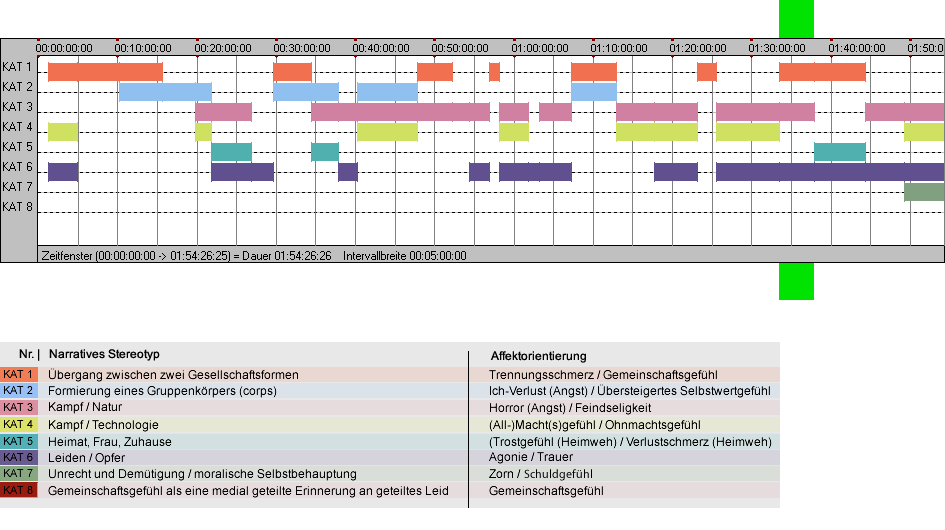Exhaustion and wounds*
Classification in categories
- Transition between two social systems
- Battle and nature
- Suffering / victim / sacrifice


Metadata
Number: 24
Individual analysis: Bataan*
Timecode start: 01:33:30:04
Timecode end: 01:37:52:28
Year of origin: 1943
The theme of the absolute exhaustion of individual bodies (>EMU 1) is resolved by embedding it in a social configuration of mutual care (>EMU 4). In between there is a trajectory from exhaustion to mourning and the pain of Feingold’s death (>EMU 2) as well as Sailor’s growing consciousness of the vulnerability of his own body (EMU 3). These varying states of individual corporeality are portrayed in different staged gestural movements and character choreographies. For the first time since the battle started there is music again.
The scene begins with the unconnected, slow and laboring movements of individual characters, their exterior likened to the tired natural environment. The soldiers’ retreating movements begin anew with each figure, are interrupted and break off abruptly when they reach camp (>EMU 1).
Dying is constituted as an unreal contrast between the paralyzed presence of a witness, the Sergeant, and the highlighted postures and movements of the dying Feingold. Feingold’s gestural punctuation portray both pain as well as a behavior that protests the pain (>EMU 2).
The subjective representation of becoming conscious of being wounded combines the paralysis of the witness and a structured series of highlighted, halting positions and movements related to the experience of suffering in one character and one body. The close-up and the temporal unfolding of these two poles in Sailor’s facial expressions and gestures make up an image of loneliness and abandonment in the moment of recognition (of the wound)(>EMU 3).
At the moment the close-up opens into a medium close shot, life returns to the tired individual bodies and the characters begin to behave actively and interact with one another. A connecting line of care and thankfulness develops, a line of sight between Todd and Sailor and Todd’s care as he doctors Sailor’s wounds (EMU 4). At the end, this human connection is underlined and at the same time—with Todd’s jerky gesture and Sailor’s jolt—refers back to the certainty of exhausted individual bodies that are sensitive to pain; whereby the feminine connotation of the act of caring that arises with Sailor’s smile is rejected with the severity of sudden pain (>EMU 4).
Expressive movement units
01 02 03 04Materials about the scene
Position of the scene in the film





